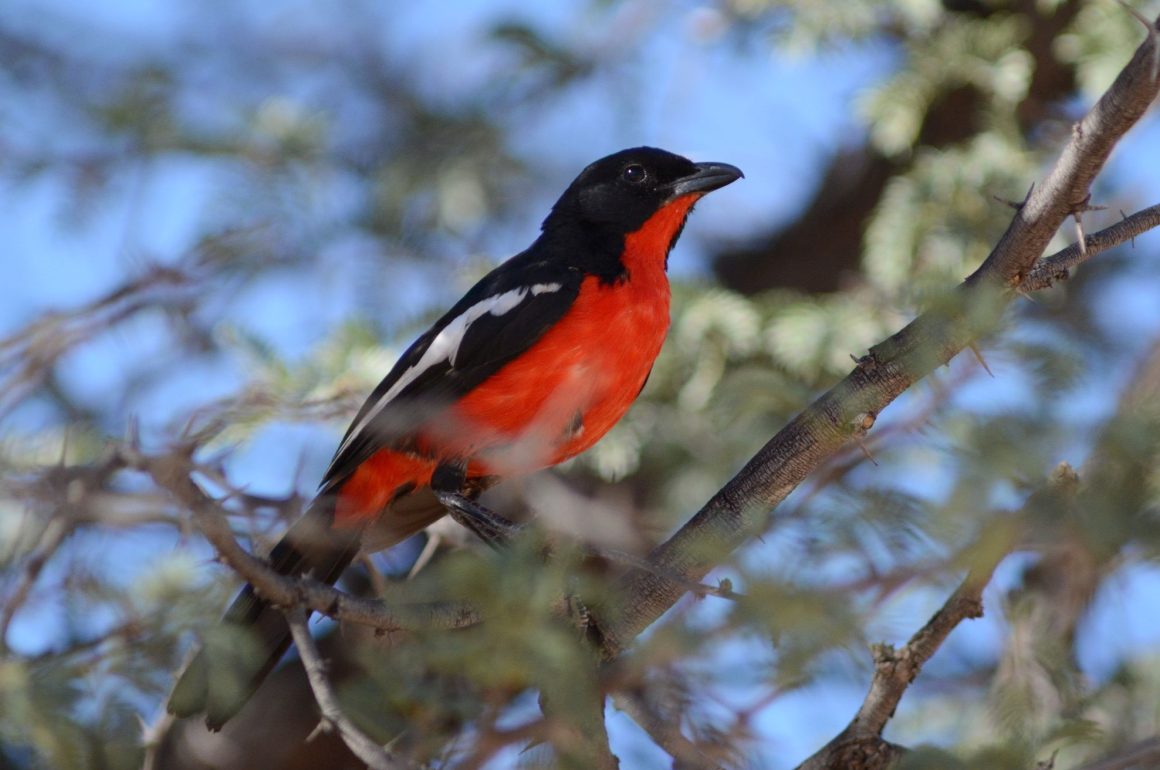
The Kgalagadi Transfrontier Park is one of the most popular game-watching spots in South Africa. The arid landscapes and large number of mammals make it particularly attractive in the dry season, when many species can show up at waterholes. I’ve only been to the park once, on the way to Namibia, when I stayed at the Mata-Mata campsite for a few nights.
The Mata-Mata campsite was great for birding, with several excellent sightings including a breeding pair of Crimson-breasted Shrikes, their dramatic red underparts glowing from the thorny acacia trees as they were collected caterpillars for their offspring (featured image). A lifer came in the form of a Southern White-faced Scops-Owl that awoke me with its odd calls during the night, prompting me to rush out of the tent with a flashlight and my camera. A Barred Wren-Warbler was also lovely to watch, gleaning insects from the ground without being bothered by my presence. At first this bird appeared rather dull, but the longer I watched it, the more intricate plumage details I noticed.
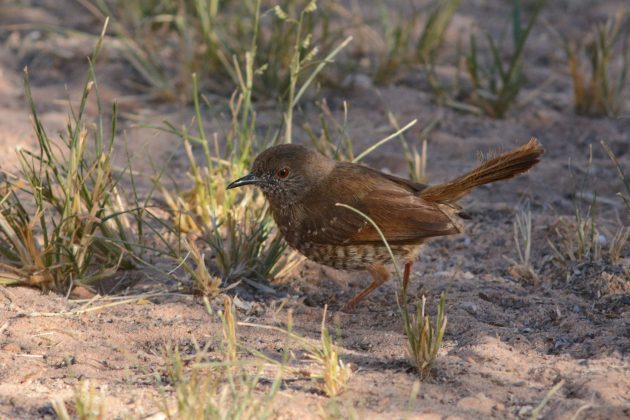
Despite the short time we had in the park, our game drives were quite productive. We saw a huge Cape Cobra, cheetahs, and a large pride of lions directly by the road. The latter was probably the best lion viewing I ever had, as the pride included a large male and several very young cups. Although they were easy to see as they were just a few metres from the car, it was shocking to see how easily even such large predators can disappear in longer grass, as we only noticed some motionless individuals directly in front of us after 20 minutes of watching the other individuals. This served as a good reminder of how limited my senses are in the outdoors (not that I intended to stroll around the national park, but just in general…)
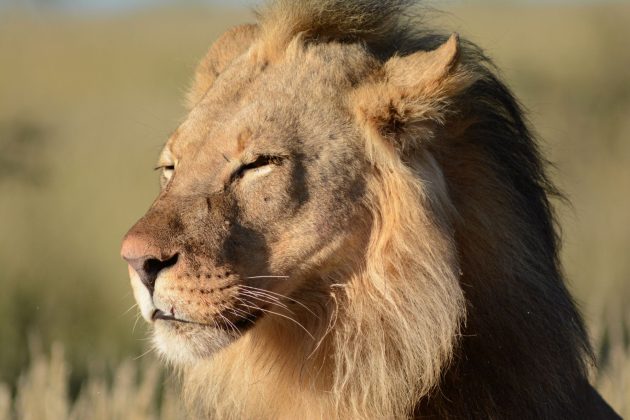
Back to the birds though, as the park also delivered in that respect. A rather common species, but nonetheless one of my favourites, was the Swallow-tailed Bee-eater. I find this to be one of the prettiest bee-eaters in South Africa, and at the same time a species I saw very infrequently as we mainly visited the eastern areas of the country on holidays, where this species generally does not occur. It was so hot that the birds were visibly panting all the time, but still appeared to prefer perching in the sun, possibly as there was a greater supply of insects in such areas.
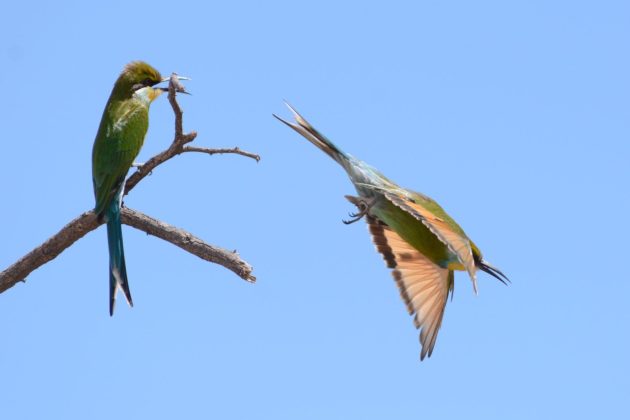
On similar perches, the barely larger Pygmy Falcon was regularly seen. This was the first time I saw this bird, having looked forward to this moment for ages. A falcon of such tiny size appeared very contradictory to me back then. This was before I moved to South Asia and first heard of the tiny falconets that are around in that part of the world, and eventually seeing them in Thailand and Borneo. This small bird of prey was very fun to watch, although it was less active than the bee-eaters and we unfortunately did not see it hunt.
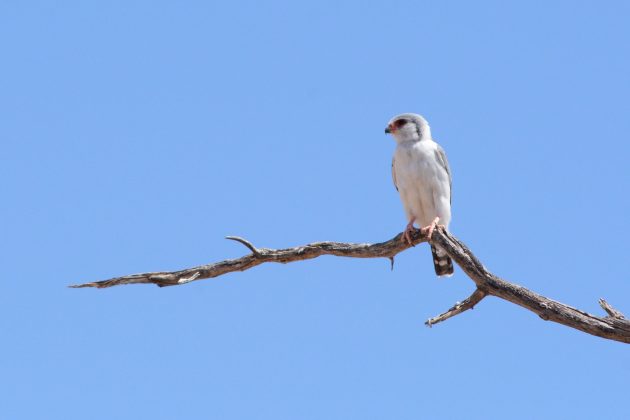
White-browed Sparrow-Weavers were probably the most common bird around, especially at picnic sites and in the shade of larger camelthorn trees. Despite being so common, these birds were fun to observe due to their social behaviours and also their plumage of various tones of browns gradually merging into each other.

Before we cleared the small border post in Mata-Mata and entered Namibia, we also watched a small group of Scaly-feathered Finches (or Scaly Weavers) collecting nesting material. They proceeded to detach small blades of grass from the roots, which evidently was a hugely strenuous task for these birds, rather unsurprising considering their tiny size.
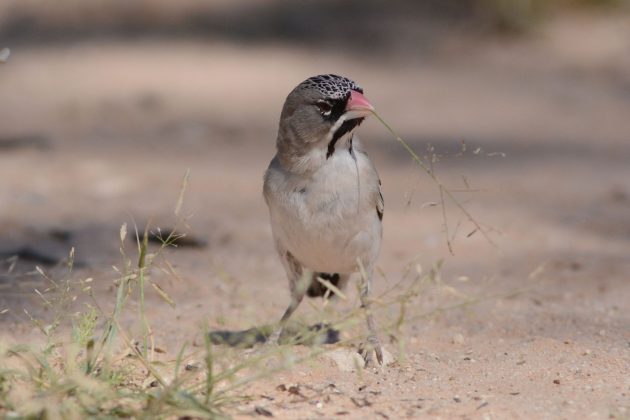
Although this stay was way to brief to make justice of this park, I was very glad to have spent some time in the Kgalagadi ecosystem and to see many of the typical birds. I would like to spend more time here in the winter months especially, when the waterholes in particular attract large numbers of animals and photography opportunities are also excellent.


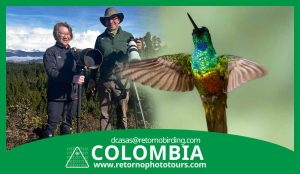
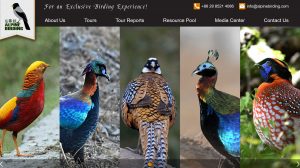
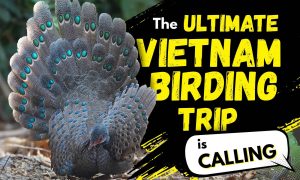
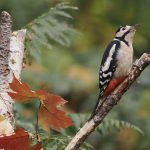
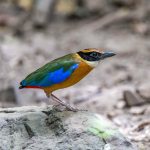
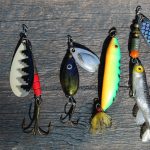
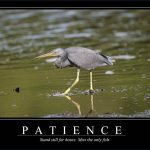
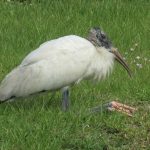
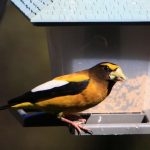
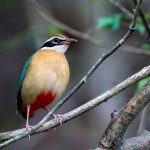
Great